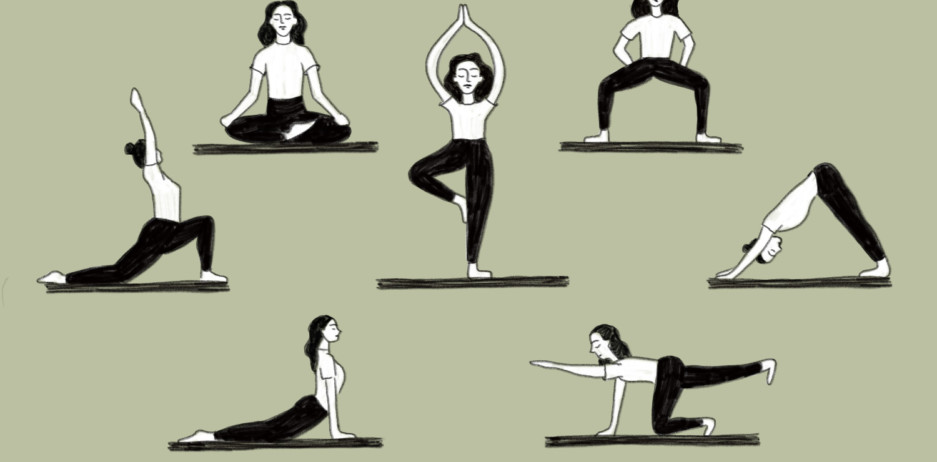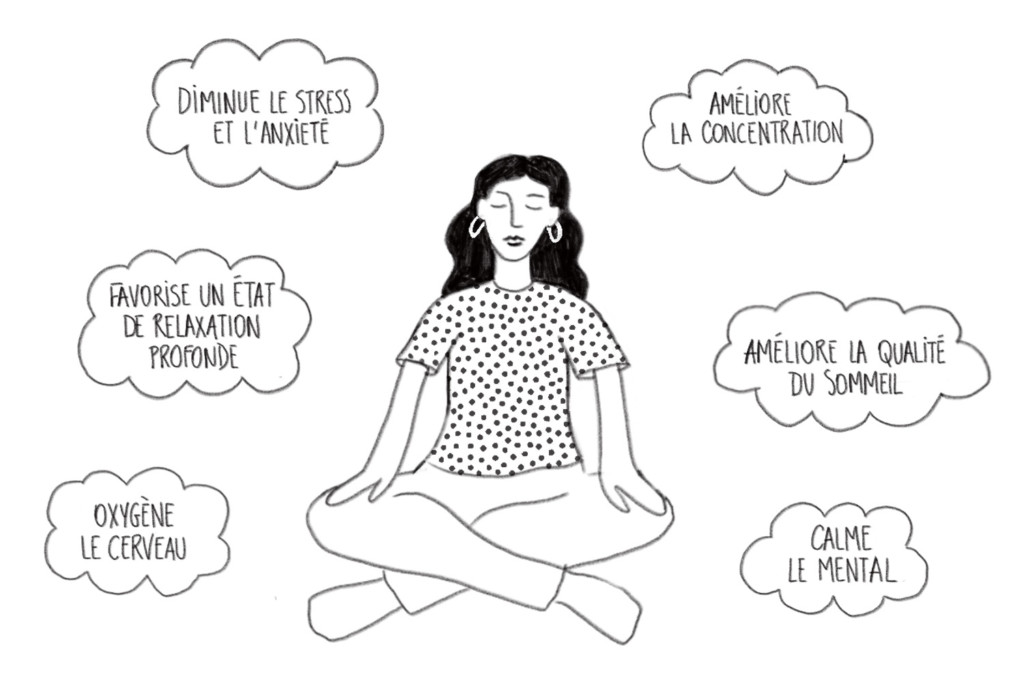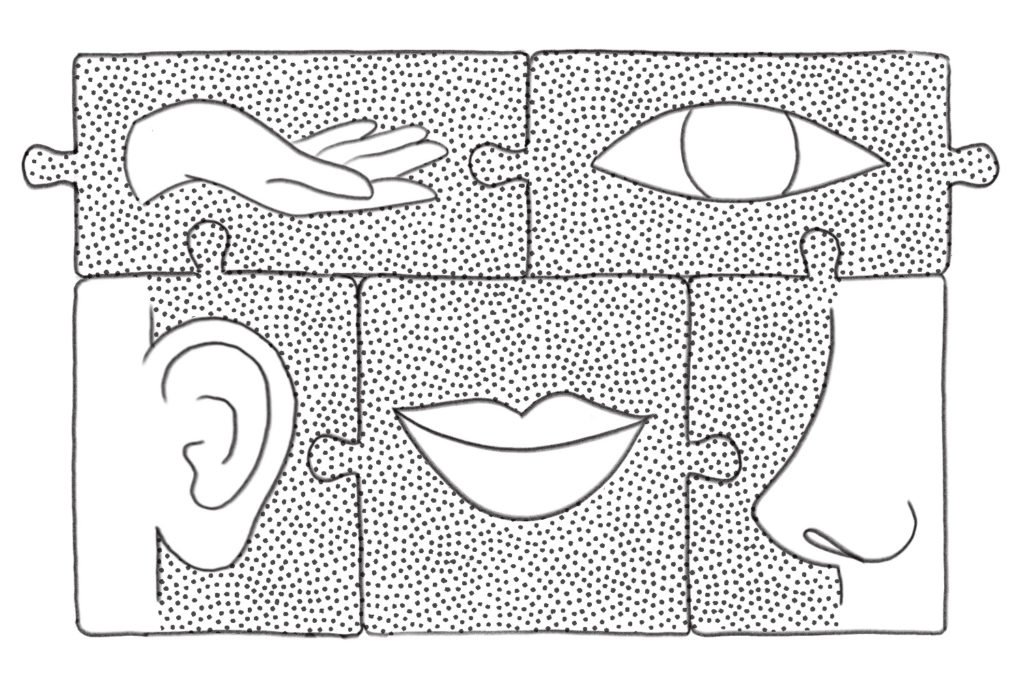
7 Meditation Exercises to Help You Gain Perspective
Looking for Anti-Stress Meditation Exercises to Help You Let Go?
Dealing with daily stress isn’t always easy, but there are simple and effective solutions to help you regain inner peace. In this article, Beauty Therapy shares 7 meditation exercises designed to help you gain perspective and relax.
Exercise #1: Focus on Your Breathing
One of the foundational exercises in meditation is focusing on your breath. This practice is the cornerstone of meditation and involves directing your attention to your inhalations and exhalations. Breathing helps regenerate the body and promotes a sense of calm.
To begin, choose a quiet place and find a comfortable meditation position, either seated or lying down. Close your eyes and try to clear your mind. The goal of this exercise is to become aware of the cool air entering your nostrils and the warm air leaving. You can also focus on the sensation of your lungs and belly expanding with each inhale and contracting with each exhale.
When meditating, it’s normal for thoughts to wander. The aim isn’t to suppress or escape them but to observe and accept them. If your mind becomes overwhelmed with thoughts, gently bring your focus back to your breath. For beginners, it might be challenging to maintain concentration, but with a few meditation sessions, you’ll quickly notice improvements.
Breathing offers numerous physical and mental benefits, including:
- Reducing stress and anxiety;
- Enhancing concentration;
- Oxygenating the brain;
- Calming the mind;
- Improving sleep quality;
- Promoting a state of deep relaxation.
This simple yet powerful exercise is a great starting point for your meditation practice.

Exercise #2: Body Scan Meditation
The body scan meditation is a technique that involves observing each part of your body. The goal is to systematically review all areas of your body, starting from the top of your head and moving down to your feet. During this exercise, pay attention to the sensations within your body—discomfort, tension, or pain—and simply acknowledge them without judgment.
Begin in a seated or lying position and focus first on your breathing to establish a sense of calm and serenity. Gradually shift your attention to each part of your body, one at a time, observing the physical sensations as they arise.
Practicing a body scan during meditation allows you to anchor yourself in the present moment. This exercise can be integrated into daily life, whether you are walking, working, or even driving. Exploring each part of your body helps you reconnect with yourself and your physical sensations.
You can practice body scan meditation for 5 to 10 minutes daily, making it a simple and effective tool for mindfulness and relaxation.
Exercise #3: Focus on the 5 Senses
Another powerful exercise to stay connected to the present moment is to focus on your five senses. By tuning into your sensory experiences, you can ground yourself and enhance mindfulness. Here’s how to engage each sense:
- Sight: Choose one or more objects in the space where you are meditating. Observe them closely, focusing on their shape, color, and texture. Let your gaze rest on these details without distraction.
- Hearing: Close your eyes and listen to the sounds around you. It could be birds singing, meditative music, the sound of rain, or even the hum of traffic. Allow yourself to be present with these sounds, noticing their nuances.
- Touch: Feel the textures in contact with your body. Pay attention to your clothing on your skin, the surface beneath you, or the sensation of the ground, grass, or chair supporting you. Let these tactile sensations anchor you.
- Smell: Inhale deeply and focus on the scents around you. This might be the fresh air of the outdoors, a familiar perfume, incense, or the aroma of a scented candle. Notice how these smells affect your emotions and thoughts.
- Taste: Bring your awareness to the flavors lingering in your mouth. It could be the aftertaste of toothpaste, juice, or a recent meal. Pay attention to how the taste feels on your tongue and palate.
Why This Exercise is Beneficial
Focusing on your senses helps you stay grounded in the moment. It’s a practice that can extend into daily life, allowing you to fully appreciate what you see, hear, feel, smell, and taste. This simple yet powerful exercise encourages mindfulness and can transform ordinary experiences into moments of presence and awareness.

Exercise #4: Observe Your Emotions
In our daily lives, we are often overwhelmed by a variety of emotions, both pleasant and unpleasant. Whether it’s sadness, anger, fear, or joy, emotions are a natural part of life. While we sometimes try to avoid them, it’s important to fully experience and accept each one.
Mindfulness meditation teaches us how to find peace, no matter what emotion we are feeling. During meditation, take a moment to observe your current emotion and analyze how it manifests in your body. Do you feel a knot in your stomach, tightness in your throat, a racing heartbeat, or perhaps excitement in your chest?
This practice helps you embrace the present moment, regardless of the emotion that arises. By observing without judgment and simply allowing the emotion to exist, you can cultivate a deeper sense of calm and understanding in your daily life
Exercise #5: Visualize a Color
Colors possess positive frequencies that can elevate our vibrational energy. Each color carries its own symbolism and influence on our mood and emotions. Visualizing one or more colors during meditation can significantly impact our psychological and emotional state. Here’s the meaning of some key colors:
- White: A soothing color that symbolizes peace, purity, and calm.
- Red: Provides energy; it is the color of passion, strength, and sexual desire.
- Orange: A warm color that brings vitality, enthusiasm, and cheerfulness.
- Yellow: The color of light and sunshine, associated with joy, energy, optimism, and creativity.
- Green: Linked to nature, calmness, positivity, and harmony.
- Blue: Represents the sky, mental clarity, serenity, and spirituality.
The exercise of color visualization can also be practiced by coloring a mandala. Drawing is an activity conducive to relaxation and tranquility. Choose your colors intuitively and pay attention to those that resonate with you.
Exercise #6: Repeat a Mantra
Repeating a mantra, a phrase repeated silently during meditation, can significantly improve your mindset. By continuously repeating a positive and motivating phrase, you can dispel negative thoughts and cultivate feelings of gratitude.
This exercise can be practiced seated or lying down, with your eyes closed, and can include the use of a mala—a necklace of 108 beads used to count each repetition of the mantra until you complete a full circle.
It is recommended to practice one or two mantra meditation sessions per day, lasting around twenty minutes each, to experience its full benefits.
Exercise #7: Harmonize Your Chakras
A meditation exercise you can practice is chakra balancing. The goal of this exercise is to focus on each chakra to harmonize them. Begin with the root chakra at the base and gradually move up along the spine. Each energy center represents its own unique energy:
- Root chakra (Muladhara): Red in color, it represents security, stability, and basic needs.
- Sacral chakra (Swadhisthana): Orange in color, it is linked to intimacy and represents joy in life.
- Solar plexus chakra (Manipura): Yellow in color, it symbolizes self-confidence, self-esteem, and encourages full emotional expression.
- Heart chakra (Anahata): Green in color, it is associated with feelings of joy and unconditional love.
- Throat chakra (Vishuddha): Blue in color, it symbolizes self-expression, listening, and communication.
- Third-eye chakra (Ajna): Indigo in color, it is associated with spirituality, self-awareness, and wisdom.
- Crown chakra (Sahasrara): Violet in color, it represents transformation and spiritual enlightenment.
You now have all the tools you need to combat stress and let go, using these 7 meditation exercises.



















